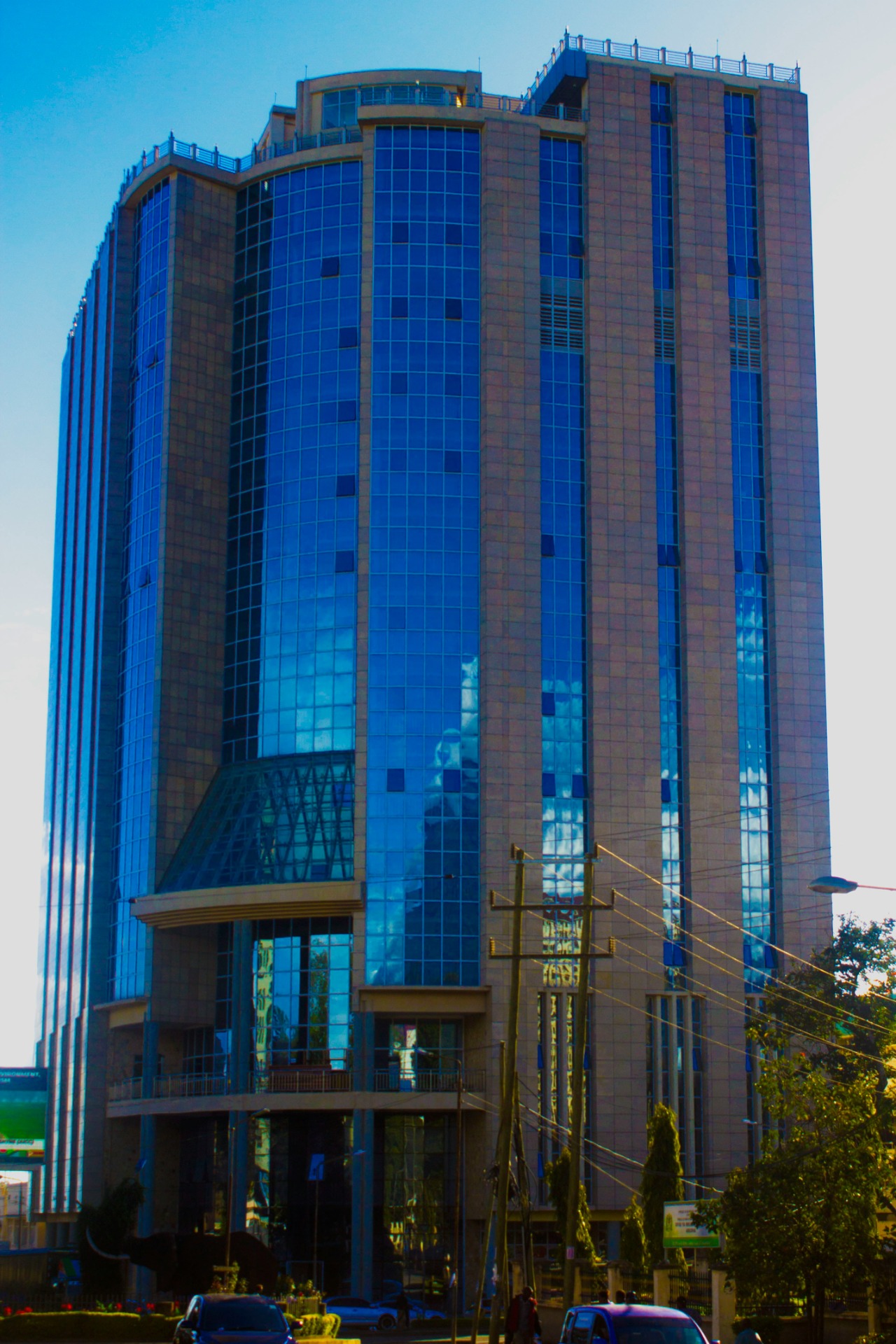
Banco de Moçambique - Central Bank
The Bank of Mozambique (Banco de Moçambique, BoM) serves as the central bank of the Republic of Mozambique, playing a pivotal role in governing the nation's monetary policy and financial system stability. Its capital is fully underwritten and injected by the Government of Mozambique.
Here is an overview of its history, fundamental roles, and contemporary challenges:
History of the Bank of Mozambique
The establishment of the Bank of Mozambique (BM) is closely tied to the country's independence:
- Establishment: The Banco de Moçambique was officially created on May 17, 1975. This was done as part of the commitments outlined in the Lusaka Accords in 1974.
- Colonial Heritage: The bank inherited the patrimony and values of the Mozambique Department of the Banco Nacional Ultramarino (BNU), a Portuguese colonial bank that had previously served as the bank of issue for the colony. After independence, the government took over the Mozambican operations of the BNU without compensation, forming the nucleus of the BoM.
- Nationalization and Mergers: In 1977, the government nationalized almost all banks operating in the country, including the Mozambican operations of Banco Comercial de Angola and Banco de Crédito, Comercial e Industrial, and merged them into the Bank of Mozambique.
- Commercial Spin-off: The bank initially included commercial functions, but in 1995, the commercial banking operations were spun off into a new institution, the Banco Comercial de Moçambique (BCM), which was subsequently privatized in 1997.
- Governance: The bank's existence is legislatively founded on Article 132 of the Constitution of Mozambique, and its activities are regulated by its Organic Law (Law No 1/92 of 1992).
- Current Structure: The headquarters is located in Maputo, with two branches operating in Beira and Nampula. The head of the bank is the Governor, who is appointed by the President of the Republic. The current Governor, Rogério Zandamela, was appointed in 2016.
Role and Functions
The Bank of Mozambique performs several critical functions central to the country's economic and financial life:
1. Monetary and Exchange Rate Policy
- Primary Objective: The main objective of the BoM is to preserve the value of the national currency (the Metical), which means maintaining inflation at a low and stable level. The BoM's main role is to guarantee price stability in the market.
- Monetary Control: The bank conducts and controls monetary and foreign exchange policies. It utilizes instruments such as net domestic assets, reserve requirements, and manipulation of the rediscount rate to manage liquidity and stabilize the domestic currency.
- Currency Issuer: The BoM has the exclusive right to issue the national currency (banknotes and coins).
- Exchange Rate Authority: The BoM is the foreign exchange authority and is responsible for managing foreign exchange controls. It is the main channel for foreign exchange into the market, often intervening in the interbank foreign exchange market during disorderly market conditions.
2. Financial System Regulation and Supervision
- Regulator of Financial Institutions: The BoM supervises all credit institutions and financial companies (CIFCs) in Mozambique, excluding insurance companies. It regulates the interest rates of commercial banks and defines reserve requirements to control inter-banking lending.
- Risk Management: It is committed to improving financial system stability. The BoM has implemented supervision systems, including a checklist to identify institutions that could pose systemic risk. It also requires banks to submit recovery plans for adequacy assessment.
- Financial Integrity: The bank enforces anti-money laundering (AML) and counter-terrorism financing (CFT) laws. For instance, in September 2025, the BoM fined commercial banks approximately 124.8 million meticais (US$1.9 million) for violating money laundering legislation.
3. Government Advisory and Financial Inclusion
- Government Banker: The BoM acts as the Banker to the Government and the Financial Adviser to the Government in monetary and financial matters. It is also the Manager of the Country's Foreign Assets (or external availabilities).
- Economic Information: It prepares economic statistics and balance of payments data, which are crucial for informing government decisions and policy formulation.
- Financial Inclusion: The BoM actively promotes access to and use of financial services by the population. It leads the financial inclusion agenda, which involves promoting credit to small-scale businesses and encouraging the development of financial products suitable for small and medium enterprises (SMEs). It also runs initiatives like the Regulatory Sandbox to respond to technological innovation in financial services and promotes mobile money expansion, which is a key driver of financial inclusion.
Major Challenges and Controversies
The Bank of Mozambique faces a combination of structural, political, and financial challenges:
1. Foreign Exchange Shortages and Policy Conflict
- Liquidity Crisis: The most reported current challenge is the shortage of foreign currency (FX) in the national banking system, particularly US dollars, despite the central bank asserting that international reserves are sufficient to cover imports (e.g., five months' coverage excluding megaprojects, as of July 2024).
- Policy Measures: Business associations report that this shortage is having a "profound impact" on the economy, causing limited import capacity and production chain interruptions. Contributing factors include the BoM's decision in June 2023 to withdraw the subsidy to commercial banks for fuel import payments, and the alleged freezing of the exchange rate.
- Intervention: In response to these pressures, the BoM has taken steps, such as increasing the amount of foreign currency revenue that exporting companies must convert into national currency from 30% to 50% as of April 2025.
2. Tight Credit and Sovereign Risk
- High Interest Rates: Despite the BoM easing its policy rate (MIMO) multiple times in 2024 and 2025, the overall monetary stance remains restrictive, leading to high real interest rates. Commercial banks often charge high interest rates, regardless of the Central Bank's standing lending facility rate, making affordable financing difficult for local businesses and SMEs.
- Sovereign-Bank Nexus: The financial system is stable, but banks have a high exposure to the public sector, with claims representing about 40% of bank assets, which is considered relatively elevated and poses macro-financial risks. High lending to the government hinders credit growth to the private sector.
- Dollarization Risk: Following the political and economic uncertainty after the 2024 general elections, the country experienced a "dollarization" process, with attempts to withdraw foreign currency, which placed intense pressure on the banking sector.
3. Governance and Regulatory Enforcement
- Corruption and Integrity: Controversies have emerged regarding widespread corruption within the banking systems in Mozambique. The BoM has been actively fighting illicit activities, tightening regulatory mechanisms to combat money laundering and terrorist financing.
- Regulatory Delays (FDI): The BoM controls all transfers of direct investments, and foreign investors are required to register their investment projects and obtain prior authorization for profit repatriation. These complex administrative procedures often lead to bureaucratic delays and inconveniences for foreign firms seeking to transfer funds internationally.
- Financial System Weakness: Although the BoM fulfills its regulatory role, the banking sector remains volatile. In the past, the BoM had to intervene and take over banks, such as the defunct bank MOZA (2017).
The Banco de Moçambique (BM), as the country's central bank, plays a critical role in shaping monetary policy and overseeing foreign exchange regulations. The following analysis delves into its monetary policy framework and the current rules governing foreign exchange, highlighting key insights and developments.

Monetary Policy Framework and Objectives
Since April 17, 2017, the Banco de Moçambique has implemented a monetary policy regime focused on the Mozambique Interbank Money Market (MIMO) rate as its primary tool for achieving inflation targets. This strategic shift from traditional monetary targeting was necessary due to previous shortcomings that stemmed from unstable demand for money and rapid financial innovations within Mozambique. The adoption of the MIMO rate aims to deliver a clear signal of the bank's policy stance, enhance transparency, and improve the overall effectiveness of monetary policy transmission.
In April 2025, significant actions were taken by the Monetary Policy Committee (MPC), which decided to lower the MIMO rate from 12.25% to 11.75%. This reduction reflects the bank's response to both domestic and international economic conditions. The decision signals a move towards an easing stance intended to stimulate economic activity as the country grapples with declining growth — a notable fall to 4.9% in the fourth quarter of 2024 — along with moderate inflation pressures largely influenced by rising catering service prices.
The decision-making process of the MPC involves meetings every two months, along with extraordinary sessions when necessary. During these meetings, committee members assess inflation forecasts, evaluate economic outlooks, and consider risks to financial stability. The bank emphasizes medium-term inflation targets while remaining vigilant to the stability of the financial system, particularly in the face of external vulnerabilities and fiscal pressures.
In terms of additional tools, the Banco de Moçambique employs moral suasion and conducts interventions in the foreign exchange market as part of a floating exchange rate regime. The bank utilizes a liquidity forecast model to ensure that interbank rates align with the MIMO rate, facilitating effective liquidity management within the economy.
However, the challenges ahead for the Banco de Moçambique are substantial. The bank operates within a framework influenced by external shocks and faces obstacles associated with the legacy of weak institutions from the colonial era. Despite some advances in monetary stabilization, the lingering issues of corruption in lending markets and widespread poverty continue to impede progress. The International Monetary Fund has acknowledged the positive impact of recent reforms, yet concerns about public interest in the privatization process remain a crucial focus for the bank's 2018–2020 strategic plans.
Perspective
While the BM's focus on inflation targeting aligns with global trends in central banking, its effectiveness is inevitably constrained by Mozambique's structural challenges, including limited financial inclusion and vulnerability to commodity price fluctuations. Although MIMO rate cuts may provide a temporary boost to economic growth, there exist risks of triggering inflation, particularly if external shocks, such as hikes in fuel or food prices, occur. Furthermore, while a floating exchange rate offers flexibility, it can also amplify volatility within an economy that heavily relies on the metical.
In summary, the Banco de Moçambique stands at a pivotal crossroads in 2025, navigating challenges and opportunities within an increasingly complex economic landscape. Its strategies moving forward will need to account for both domestic realities and global economic trends to foster sustainable growth and financial stability.
The Mozambique Interbank Money Market (MIMO) is a system where banks in Mozambique lend and borrow money from each other for short periods, like a few days or weeks. The MIMO rate is the interest rate that the Banco de Moçambique (the central bank) sets to influence how expensive or cheap it is for banks to borrow this money.
Think of it like this: If the central bank wants to encourage spending and growth, it lowers the MIMO rate, making it cheaper for banks to borrow. This can lead to more loans for businesses and people, boosting the economy. If the bank wants to slow things down to control prices (inflation), it raises the MIMO rate, making borrowing more expensive.
In simple terms, the MIMO is a tool the central bank uses to keep the economy stable by controlling the flow of money between banks.
2025 Foreign Exchange Rules in Mozambique
Regulatory Framework
The Banco de Moçambique (BM) serves as the foreign exchange authority for the country, operating under the guidelines established by the Foreign Exchange Law (Law No. 11/2009, March 11) and Decree No. 49/2017. These regulations outline the framework for foreign exchange transactions, with implementing rules articulated in Notice No. 20/2017, issued on December 27. This legal structure aims to maintain order in foreign exchange operations while facilitating compliance with international standards.
Key Principles
Foreign exchange operations in Mozambique must adhere to strict principles, including the declaration of assets, repatriation of revenue, and utilization of the national banking system. All banks and authorized entities are subject to verification, registration, and reporting responsibilities. This is managed through the Meticalnet system, which enhances economic management and combats money laundering by ensuring transparency in financial transactions.
Pre-Authorized Transactions
To streamline processes, specific transactions—such as foreign direct investment (FDI) and operations involving non-resident accounts—are pre-authorized, allowing banks to manage them directly under Know Your Customer (KYC) principles. While all transactions must be registered with the BM, not all require prior approval, which helps reduce bureaucratic delays.
OTC Derivatives
Over-the-counter (OTC) financial derivatives that are not cleared by a central counterparty are permitted for businesses to hedge risks and manage cash flows. These transactions are regulated under Notice No. 1/GBM/2021 (March 16) and are limited to specific products utilized for business purposes only.
Export Revenue Rules
Companies generating export revenues are mandated to maintain foreign currency accounts, either domestically or abroad. Within 90 days of receipt, they must convert 50% of these revenues into meticais to ensure liquidity in the local market. This requirement aims to stabilize the domestic currency and enhance cash flow within the economy.
Virtual Platforms and Cryptocurrencies
Trading foreign currencies or cryptocurrencies through virtual platforms with domains not registered in Mozambique remains unregulated and poses risks to users. Conversely, financial activities conducted via locally registered domains do not require prior authorization from the BM but are subject to monitoring to prevent capital flight and illicit activities.
Recent Developments
On June 18, 2024, the BM hosted a dissemination session aimed at clarifying recent changes to foreign exchange regulations. This reflects ongoing efforts to engage with stakeholders and refine the regulatory framework. Changes introduced under Notice No. 20/GBM/2017 have decentralized some registration responsibilities to commercial banks, now required to submit records to the BM within 5 to 90 days. A "Term of Commitment" was established wherein banks certify importer/exporter transactions for customs purposes. Additionally, the limit for direct advance payment guarantees was increased from USD 50,000 to USD 250,000, although physical currency import/export continues to be capped at USD 5,000.
Perspective
The BM's foreign exchange controls strive to strike a balance between liberalization initiatives, such as pre-authorized FDI, and stringent oversight aimed at preventing capital flight and ensuring compliance with regulations. However, the requirement for a 50% revenue conversion and the close monitoring of transactions may deter potential foreign investors, especially in an economy that is already capital-scarce. Furthermore, the lack of regulation for offshore virtual trading platforms leaves a gray area that can expose retail investors to significant risks while restricting the BM's oversight capability. Although the decentralization of registration duties to banks could lead to improved efficiency, there is a risk of inconsistent enforcement if regulatory oversight remains weak.
In conclusion, Mozambique's monetary framework and foreign exchange rules present both challenges and opportunities as the nation seeks to enhance its economic resilience and attract investment in a competitive global landscape.
